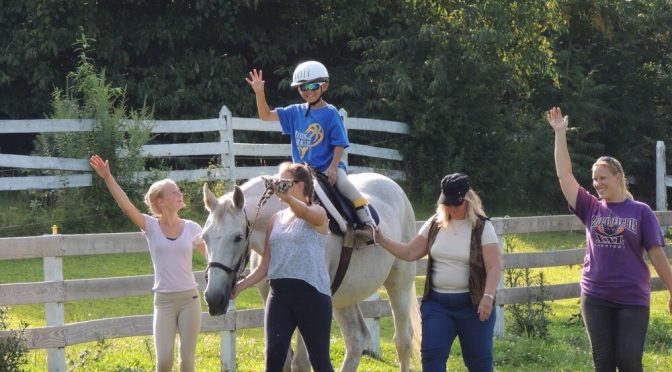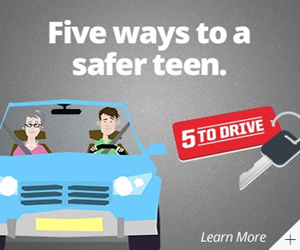Sometimes in life, we are given an opportunity to witness a miracle. I was gifted the opportunity last week when I was asked to visit with LEAP (Lehigh Equestrian Academy Project). I was invited to visit by the mother of a child who participates in the program. She was hoping The Valley Ledger could help spread the word about this wonderful program that uses therapy horses to achieve goals that enhance physical, emotional, social, cognitive, behavioral and educational skills for people who have disabilities. Her son Richard has been greatly assisted by the benefits of participating in therapy riding programs. Without a local program like LEAP Richard would have to travel an hour to reach the next closest certified riding program.
I was given an overview of the program by Kelsey Repsch. Kelsey is LEAP’s certified therapeutic riding instructor. She oversees the operations of the program with the help of other volunteers. As we walked through the stable, I was introduced to Molly. Molly is a therapeutic riding horse. She was waiting to be saddled up and start her first of three riding sessions, that she and the rest of the volunteers were going to participate in that night. Next, I was introduced to Richard. He was very shy. My attempts to introduce myself were countered with his response to run and hide. His mother Aileen gave me some background about Richard. Richard is diagnosed with Cerebral Palsy, PVL (Periventricular Leukomalacia or damage to the white matter of the brain), and seizures. Richard also has Hypotonia (low muscle tone), as well as Tibia vara, in which the lower part of his legs are bowed. He also has ongoing gastrointestinal motility and constipation issues. The hypotonia coupled with the seizures and the bowing of his lower legs makes his balance poor and he is at risk for falls. He does wear DAFO braces to stabilize his legs, but at times even with the braces, he is at risk of falling. He also wears a protective helmet for his seizures as well as the potential of falls, and has a VNS (Vagus Nerve Stimulator) implant to help control his seizures. Richard also suffers from Sensory Processing Disorder, Anxiety Disorder, PDD-NOS, and ADHD which contribute to his constant need for routines, familiar places, and people which make interacting in social situations extremely difficult for Richard. He tends to have severe meltdowns when he is in a situation that is unfamiliar or has too many stimuli involved or is too crowded and noisy. At times, his first response to an unwanted situation is to flee the area or scene without regard to his own safety.
After introductions LEAP’s volunteers led, Molly out to a special deck with a ramp where Richard was waiting to get in the saddle. For me this is where the miracle begins. Almost as soon as Richard’s feet were in the stirrups, his face lit up with the purest smile. He sat tall in the saddle and when instructed by Kelsey he gave Molly the command to walk. This child went from an easily startled shy little boy to a calm and in control child. With direction from Kelsey, the group walked into the riding ring. Richard was given a series of exercises to preform while the volunteers walked along side of Molly. One handled the lead rope and guided Molly around the ring, while others kept a hand on Richard’s feet in the stirrups. The exercises help to develop strength, balance, coordination, flexibility and confidence. Another benefit received is that horses move in a rhythmic motion that mimics the human movement of walking. While riding, the horses stride acts to move the rider’s pelvis in the same rotation and side-to-side movement that occurs when walking. All of these movements help Richard to move in ways that are otherwise difficult. Richard was focused and engaged the entire session. The effects were not just seen while Richard was riding Molly; once the session was over, he was more outgoing and willing to talk to me. His was more confident and engaged with the world around him. Even as other people came into the area, he was not looking for somewhere to run and hide.
I cannot express enough how beautiful it was to observe the effects of this program. Thankfully, LEAP is right here in the Lehigh Valley. The physical benefits alone are enough to rave about the program, but the emotional and mental advantages make it truly a miracle. Aileen told me that until joining a therapy riding program Richard would only communicate by signing. His first spoken words were to a horse. It makes sense; I mean really how could a horse sign back 🙂
If you have a child with special needs, I highly recommend you talk with your health care provider about the benefits of therapeutic riding. If you have time to spare and want to witness a miracle for yourself, please contact LEAP to find out how you could get involved.
Here is a link to more photos from my visit to LEAP Riding in the Lehigh Valley http://www.snapshotsof.us/TheValleyLedger/LEAP-Riding
You can find out more about LEAP by visiting their website http://www.leapriding.org/





